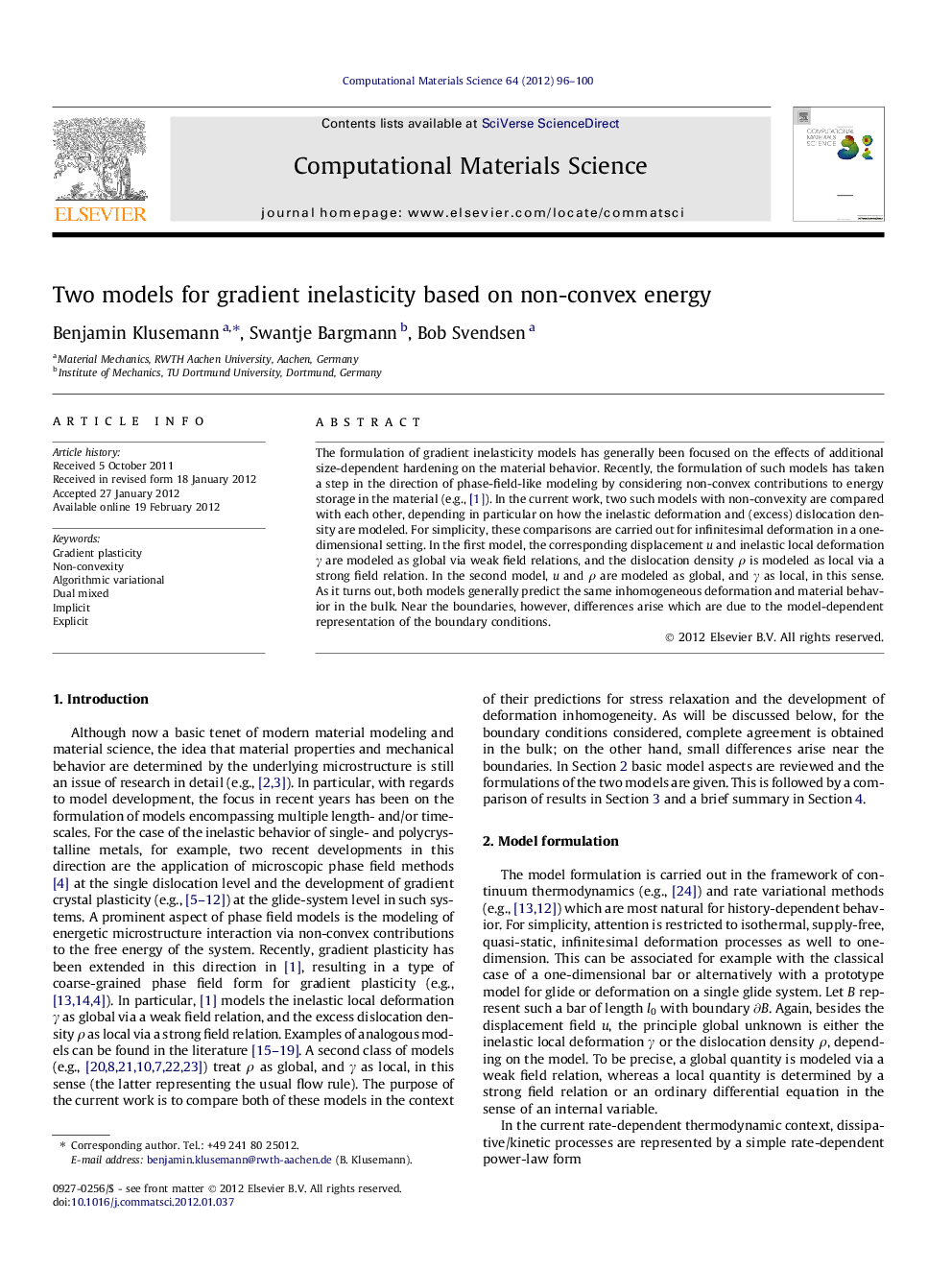| Article ID | Journal | Published Year | Pages | File Type |
|---|---|---|---|---|
| 1561690 | Computational Materials Science | 2012 | 5 Pages |
The formulation of gradient inelasticity models has generally been focused on the effects of additional size-dependent hardening on the material behavior. Recently, the formulation of such models has taken a step in the direction of phase-field-like modeling by considering non-convex contributions to energy storage in the material (e.g., [1]). In the current work, two such models with non-convexity are compared with each other, depending in particular on how the inelastic deformation and (excess) dislocation density are modeled. For simplicity, these comparisons are carried out for infinitesimal deformation in a one-dimensional setting. In the first model, the corresponding displacement u and inelastic local deformation γ are modeled as global via weak field relations, and the dislocation density ρ is modeled as local via a strong field relation. In the second model, u and ρ are modeled as global, and γ as local, in this sense. As it turns out, both models generally predict the same inhomogeneous deformation and material behavior in the bulk. Near the boundaries, however, differences arise which are due to the model-dependent representation of the boundary conditions.
► Comparison of two models for gradient inelasticity with non-convexity. ► Models based on local deformation or dislocation density modeled as fields. ► Both predict the same inhomogeneous deformation and material behavior in the bulk. ► Differences arise near boundaries due to diverse fulfillment of boundary conditions. ► Results based on explicit and implicit time integration are compared.
